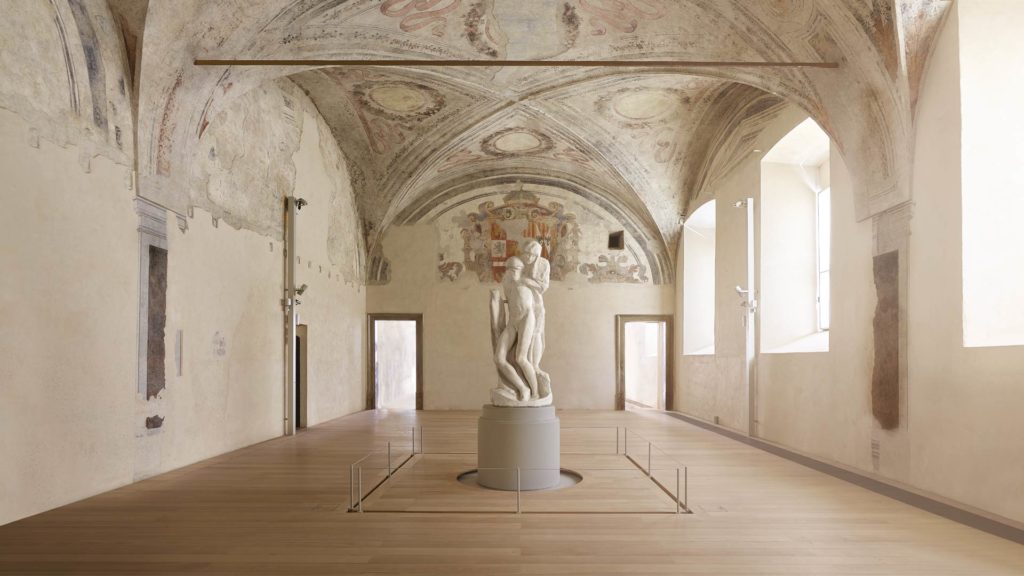
aMDL Michele De Lucchi
Michelangelo’s last work now displayed in an entirely new way.
Transferred to Milan from Rome in 1952, Michelangelo’s very last work – the sculpture known as the Pietà Rondanini – was placed in the Sala degli Scarlioni in Milan’s Sforza Castle as part of a museum design program developed at the time by the architecture practice BBPR (Banfi, Belgiojoso, Peressutti, Rogers).
The statue remained there until 2015 when, in a highly controversial move, it was allocated a new location in the Sforza Castle: the Ospedale Spagnolo.
Today, it stands in the center of the room that served as an infirmary during an outbreak of the plague in 1576. A large rectangular double barrel vaulted hall, it has remained unchanged since it was built in the 16th century. Segments of the wall decorations and frescoes are still visible.
Michele de Lucchi’s museum design, completely revolutionized the way Michelangelo’s sculpture is presented, and thus viewed by the public. In complete contrast to its former placement, the work is now isolated in the center of the hall, and placed so that the first thing visitors see on entering is the back of the sculpture, its most moving aspect, the curved figure of the Madonna leaning over the dead Christ capturing the immensity of human grief.
The sculpture stands on an anti-seismic platform guaranteed to protect it from any kind of vibration. The rest of the room has been left deliberately bare, the only other objects being three oak benches and a glass case with information on the Pietà.
As well as enhancing the spare elegance, the oak flooring highlights the pure color of the marble. Plant and equipment have been placed in the space under the oak covered dais.
The lighting has been placed so as to produce no shadows. Large windows allow natural daylighting into the room, allowing good views of the frescoes while not distracting from the masterpiece in the center.
“The ancient Spanish infirmary, founded in 1576 to treat castle inmates during a plague epidemic, is a place of suffering… a suitable place for a Pietà”
Michele De Lucchi